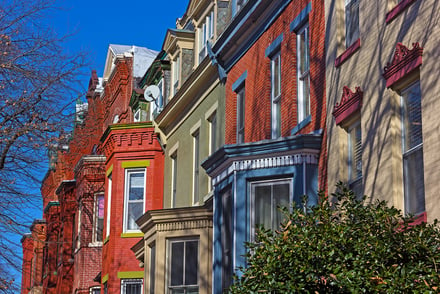Renaissance Development, a leader in historic preservation, specializes in the repair and restoration of historic DC brick buildings. We love old homes and are committed to preserving their historic charm and value. If your renovation plan includes masonry or brick repair, contact us for a free site visit and project quote.
If you are the recent owner of a historic home in DC, the chances are that you are looking at a renovation project. Preservation of the building's authentic characteristics is critical to retaining it's historic value. If your old house is located in a historic district, there are probably guidelines for you to follow. It's important to familiarize yourself with the specific requirements and restrictions on building permits. You should also follow basic principles of historic preservation.
Every project is different and will have different needs and solutions. Historic home renovation is guaranteed to be challenging and rewarding. Here are six guidelines recommended by the National Trust for Historic Preservation.
1. Do not destroy distinctive original features.
Identify those unique and historical elements that define the building's character, and make every effort to preserve and protect them. Avoid removing or altering items that are critical to maintaining the original historic fabric of the building.
2. Recognize that all old houses are physical products of their own time.
Each one tells a unique story about the people, places, and things surrounding them when they were built. Avoid changes that may create a false sense of historical development. Respect and retain changes that have taken place over time and have added to the historical value.
3. Treat and preserve distinctive stylistic features or examples of skilled craft work sensitively.
Carefully save and protect the materials, features, finishes, and examples of craftsmanship that characterize the property.
4. Repair rather than replace worn architectural features whenever possible.
And when replacement is necessary, new materials should match the old in design, composition, and color.
5. Clean facades using the gentlest methods possible.
Avoid sandblasting and other damaging methods. Be especially cautious when using chemical or physical treatments, and always test the materials first.
6. Build new additions so they can be removed without impairing the underlying structure.
This way, if they are eliminated in the future, the essential historical structure will remain intact.These six guidelines are intended to help you rehabilitate a historic property in the most accurate and appropriate way possible. There are many professionals available to assist you during every phase of your project, from architects and masonry contractors to researchers and librarians. You can also check with your local or state preservation office for more help.
Source: National Trust for Historic Preservation
Tags:
Historic PreservationApr 25, 2017 8:30:00 AM



